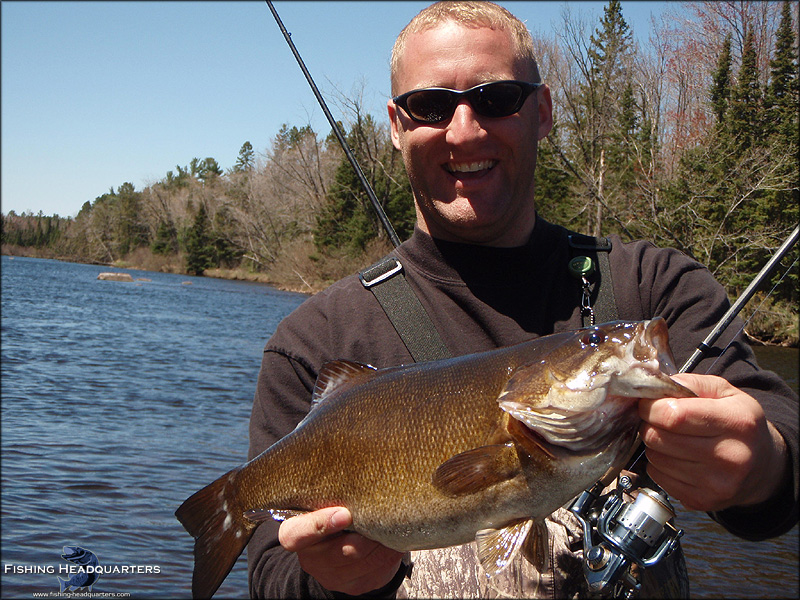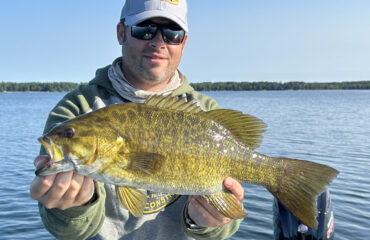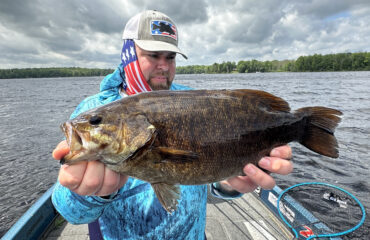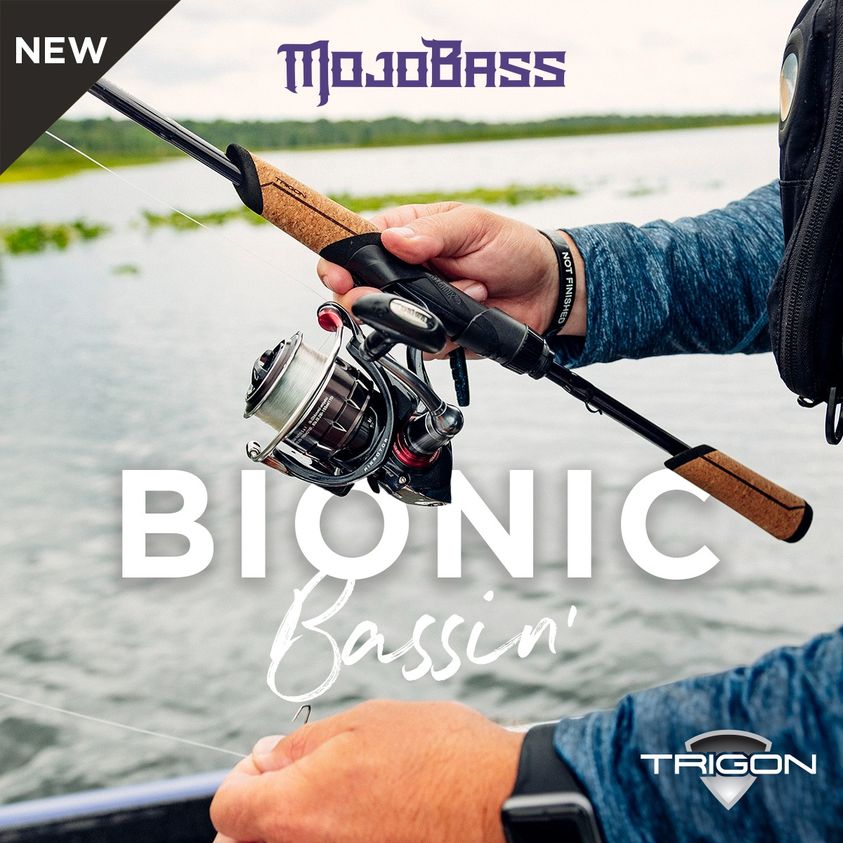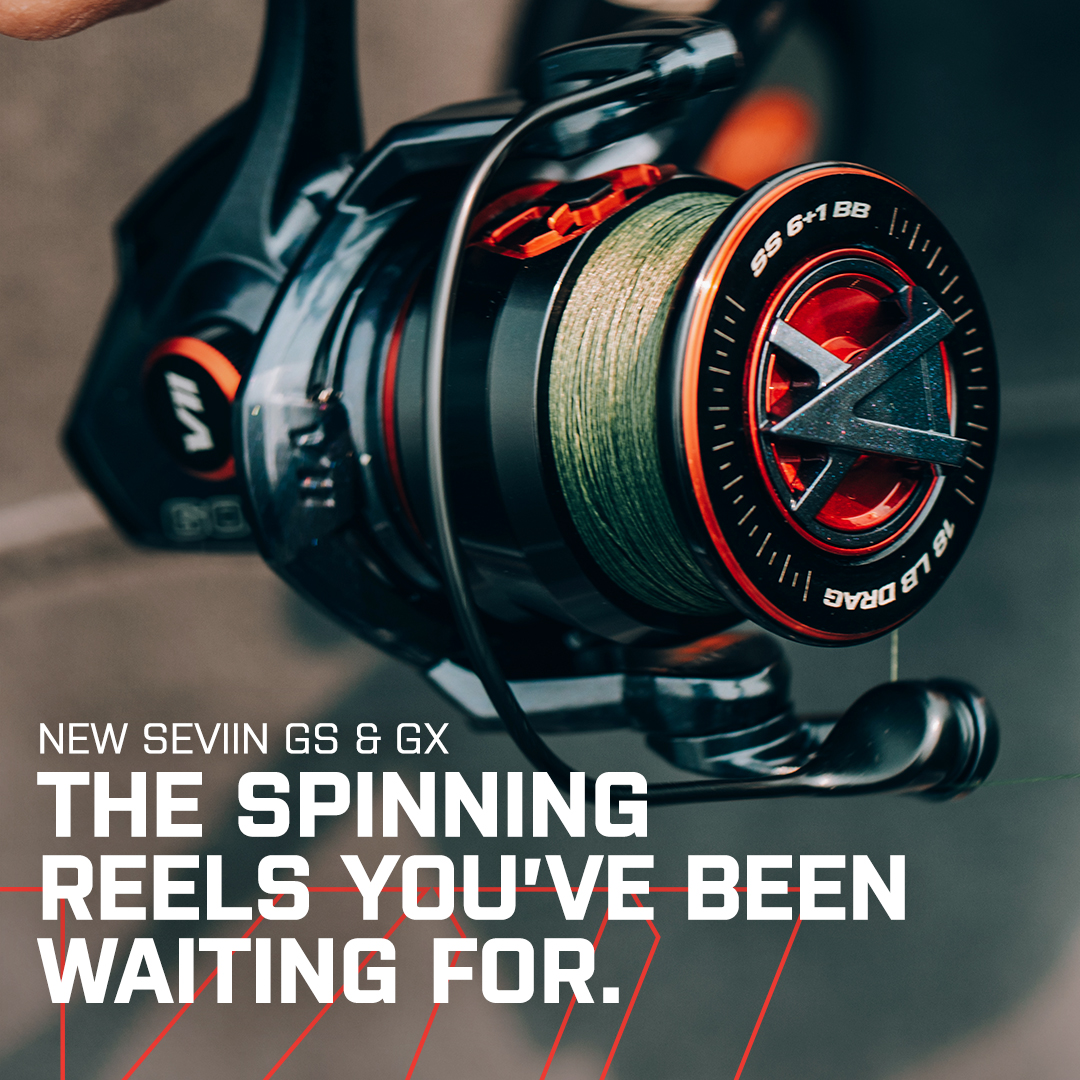The Inline Spinner Renaissance
The effectiveness of artificial lures should never be questioned. Inline spinners have successfully lured fish into biting for over 100 years. For most anglers, fishing with inlines is not a foreign technique. But to some, it is an unknown concept. They are a lure category that is underrated, often forgotten about, and left ignored in the tackle box.
With the advent of new lure concepts, and the technological advances in manufacturing, design, and mass production, it’s no wonder why certain lures have taken the back seat in the boats of many anglers. Inline spinners are one of them. Most lures available nowadays are so high-tech with flamboyant colors, realistic images, and enticing smells that they’re too hard to ignore. Often times, however, they catch the anglers rather than the fish themselves. Far too few baits and lures these days remain productive under the simplistic design properties and triggering effects that inline spinners have.
Inlines 101
There is no type of lure sold in such quantity with international acclaim as the inline spinner. Its origins and history are unknown, but it has been a perennially popular freshwater lure for all species of fish such as muskies, northern pike, bass, salmon and trout.
For those of you who have never clipped on an inline spinner to your rod and reel, they are a family of fishing lures that have a metallic shaped blade, weighted body, and dressed treble hook attached to the wire of the lure. As the lure is in motion, the blade spins several rotations per second creating varying degrees of flash and vibration that serve as the triggering effect.

The Triggering Effects
Inline spinners are productive fish producers for a multitude of reasons. While their uniqueness and simplicity can be analyzed with great detail, there are four predominant qualities within the lure that entice fish. These qualities are the following:
Blades: The blade is central to the effectiveness of the spinner. Not only because of the visual appearance and illusion it produces when retrieved, but because it generates a great amount of vibration that is detected by the sensory organs of fish.
In my opinion, the blade is the most significant component of the lure, and the allure of the entire presentation. The unique design feature of the inline enables the blade to pump and push through water, producing a tremendous amount of flash and attraction.
Blades are available in different styles from size 0 brook trout and panfish models to giant size 10 muskie and massive gamefish size. In addition to size, blades also come in different styles, and each performs differently from the other. The most common blade types are Indiana, Colorado, and willow. For instance, Indiana blades are accommodating of fast, streamlined retrieves when a speed presentation is required. Colorado blades are best served with a power and pound approach when vibration and larger profile is necessary, including bulging the surface. Meanwhile, willow blades are often utilized for slower presentations and when fishing deeper water.
Last but not least, blades come in an overwhelmingly large variety of colors and patterns. Most are commonly polished and painted to offer a metallic color and finish. Some are simply powder coated to emit bright and stunning colors. In addition, others are even printed with holographic designs for imitating fish scales and natural prey through sunlight reflection.
Weight: The second key feature of spinners is their weight. Most inlines today are produced with a weight-forward design. This is an important feature because their heavy weight and compact, balanced design makes them effortless to cast. The weight of spinners ultimately plays a big role in being able to retrieve at different depths of the water column. Most lures are available in weights from 1/32 ounce to several ounces.
Speed of Retrieve: Another key to fishing with inlines is the speed at which these lures can be retrieved. The general consensus is the faster the better, but preferably the speed that enables you to cover vast amounts of water with a perfectly streamlined retrieve is best.
Factors such as blade design, weight, and surface area are all related to how the lure is retrieved. A spinner does not begin working properly until it is being retrieved. For example, if a spinner is fished too slowly, the blade may rotate erratically, or it may not even rotate at all. Meanwhile, if it is retrieved too quickly, the blade won’t catch water, may catch the body or hooks, and definitely won’t catch fish.
The speed of retrieve is also dependent on your rod and reel. To attain fast and powerful speeds, reels with high gear ratios have been developed just for this style of fishing. In order to maximize speed and proper presentation, it is important to factor your gear into the equation.
Dressing and Tails: Depending on personal preference of bait profile and action, the treble hook can either be dressed or not. By itself, the lure’s flash and vibration may serve as the only attractors. However, anytime you add a modification to a lure, its action and appearance changes, and the presentation alters.
Traditional hook dressings are available in several different colors, and are comprised of hair or fur such as marabou and squirrel tail. Nowadays, however, flashy artificial materials such as flashabou are increasingly popular as they add a fluttering flash in luminous, multi-colored, or solid flash colors, increasing the complete flash profile of the lure. In my opinion, flashabou entices more strikes and followers rather than conventional marabou and hair.
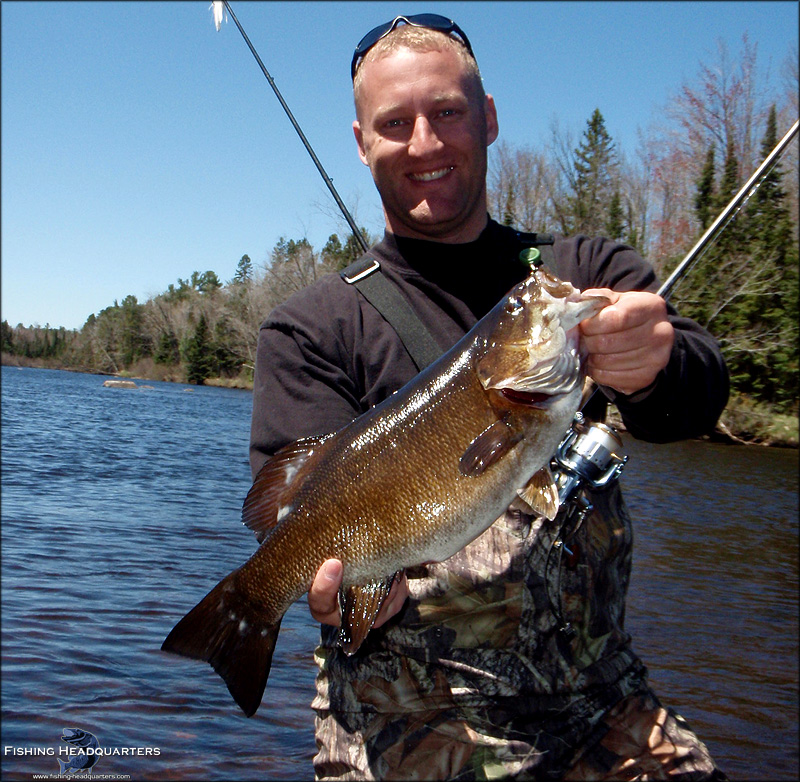
Many anglers believe that a dressed treble presents following fish a target that follows the flashy blade ahead of it and that it may entice more strikes than a bare treble hook. For this reason, anglers often add soft plastic trailers to the hook to add even greater attraction. The most common trailers are curly tail grubs and reaper tail plastics. The speed of retrieve is always dependent on the blade size and design, but trailers change the appearance, profile, action, and dynamics of the inline spinner.
If you were to walk into a tackle shop and look around in the spinner aisle, you may be overwhelmed by the number of different spinners and available brands. To my knowledge, there are two major spinner brands that strictly cater to the needs of multi-species anglers. They are Mepps and Blue Fox.
Mepps is the pioneer of inline spinners, and quite possibly the most popular lure brand in the entire world. Invented in 1938 by French engineer, Andrew Meulnart, it didn’t take long for Mepps to revolutionize the fishing tackle industry. It’s difficult to imagine being in a tackle shop that does not carry a stock of Mepps inlines. But for those of you who have never used one, they are high quality spinners that that are available in all shapes, sizes, colors, and profiles for a multitude of freshwater gamefish from trout to muskies. As successful as they are, Mepps isn’t called “World’s Number-1 Lure” for nothing. Since day-1, they have sold millions of lures to anglers around the world.
Meanwhile, Blue Fox spinners, currently owned by the Rapala brand, are another very high quality lure that utilizes different blade styles than Mepps. What makes these spinners unique is the concept of the “vibrax” body system which allows the entire tail of the spinner to rotate an entire 360 degrees while retrieved. By enabling the tail to rotate 360 degrees, the lure generates a triggering effect for fish which helps them take notice of the spinner pumping through water. Just like the Mepps brand, several Blue Fox spinners are designed for specific applications from the classic vibrax and flash for salmon and trout, to the musky buck.
Besides these three companies, I also give recognition to Panther Martin and Roostertail but they are dominant within the trout and salmon markets. I can also mention the dozens of companies who have revolutionized the sport of musky fishing with the production of unique bucktails and flashabou spinners, but that might be better served for a different piece at another time.
Smallmouth Weapons of Choice
An inline spinner merely represents a suggestion of something for fish to eat rather than an imitation of it. Through flashy appearance and rapid movement, it triggers fish to feed through retrieve speed, pulsating blade rotation, and lateral movement. It commonly emits a reactionary strike from fish. It may not be the best lure to use in most circumstances, but when fished in the appropriate place along with the proper size, it is a lure that will catch most species of fish.
Most inline spinners are used for casting. They are uncomplicated to use, and in most sizes they consistently hook fish. Below I outline certain scenarios and techniques that are applied to some of my favorite species of gamefish.

Fishermen have long known that inline spinners are a traditional favorite for river smallmouth bass. In fact, it’s how I even began to fish for them in the first place; by wading rivers with inlines. Fished in cool running rivers and streams, or large deep lakes, inline spinners are dynamic lures spring through fall.
Smallmouth fishing in the Upper Midwest is often associated with rivers or streams, reservoirs and natural lakes. In rivers and streams, an inline spinner is hard to beat when burned through the seams of current, past boulders, and downed timber. Oftentimes, fish will hold above, next to, or behind this structure to opportunistically ambush prey such as crayfish and baitfish. In most situations, Mepps Aglias and Sims Spinners with no. 4 and 5 blades in an assortment of colors are excellent choices for catching fish.
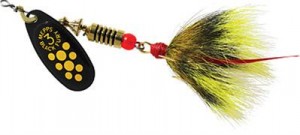
Anglers who fish lakes on the other hand will find the same inline spinner choices to be outstanding for shallow structure smallmouths during the spring and summer months when feeding sprees and insect hatches are taking place. In addition, you may even be surprised while musky fishing and you could end up catching a number of smallmouth bass by surprise on oversize bucktails. It happens more often than you think.
Now that you remember
Due to their varied applications and overwhelming number of sizes and models, it’s difficult to note the proper tackle that is best suited for fishing with inline spinners. Since inline spinners are a lure category that can be applied to fishing for any and all species of fish, the best course of action is to use a rod and reel that is suited for the particular species of fish you are fishing for.
One thing I must stress with inline spinners is that it is always necessary to use a snap swivel to counter the tendency of the rotating blade which ultimately leads to line twist. Some spinners such as the Blue Fox vibrax are very good at resisting line twist, but it is a serious problem that degrades their performance. Also, if fishing for large predatory fish such as muskies and northern pike, it is just as important to use wire, titanium, or fluorocarbon leaders to prevent breakoffs.
The versatility of inline spinners is amazing. Its neglect from anglers is staggering. This is a lure category that appeals to so many different species of fish and has withstood the test of time; an experiment that many other lures have failed in. For decades, the concept of the inline spinner has remained unchanged and it still catches fish with the same frequency as it did decades ago. Despite its simplistic nature and ease of use, it is such a basic lure that still works a good game with fish.


